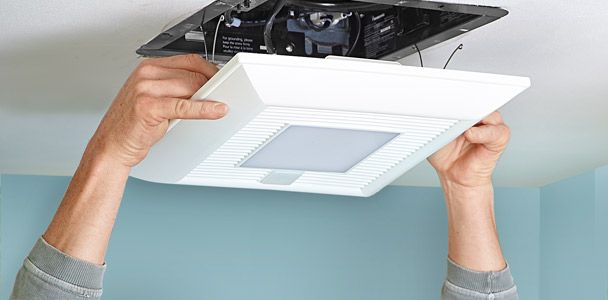Project details
Skill
Cost
Estimated Time
 Slotted screwdriver
Slotted screwdriver Phillips screwdriver
Phillips screwdriver Keyhole saw
Keyhole saw Drill/driver
Drill/driver
Upgrading to a bigger bath fan can significantly improve your bathroom’s ventilation, reducing moisture and preventing mold growth. This guide will walk you through the process of replacing your old fan with a more powerful model. Whether you’re dealing with persistent fog on mirrors or damp walls after showers, a properly sized bath fan can make a world of difference in maintaining a comfortable and healthy bathroom environment.
Step 1: Remove The Old Fan
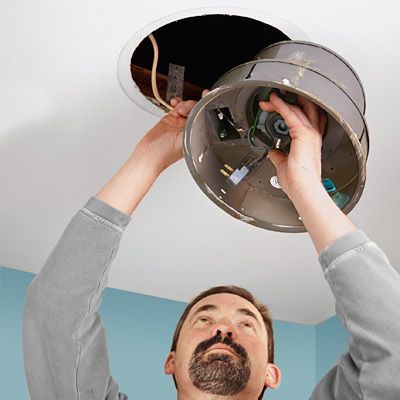
Before you begin the upgrade process, ensure your safety by preparing the work area. Here’s how to remove your old bath fan:
- Turn off the power to the fan at the circuit breaker to avoid any electrical hazards.
- Lay down a drop cloth to collect debris and protect your bathroom surfaces.
- Remove the fan cover by gently pulling it down.
- Locate and remove the screws holding the fan’s housing to the ceiling.
- Carefully pull down the motor housing to access the wiring.
- Disconnect the wires, making note of their connections for later reference.
If your fan is screwed directly to a joist, you may need to trim back some drywall to access the mounting screws. Use caution when working with electrical components and consult an electrician if you’re unsure about any step in the process.
Step 2: Prep The Opening
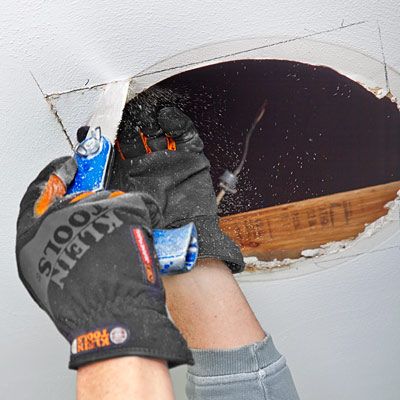
Follow these steps to prep the opening and make sure your new fan fits properly:
- Compare the size of the existing opening to the dimensions of your new fan’s housing. Place the new housing against the ceiling to visualize the fit.
- If the opening is smaller or differently shaped, trace the outline of the new housing on the ceiling.
- Use a jab saw to carefully cut along the traced line, enlarging the opening as needed.
- If the hole is larger than the new housing, you’ll need to add support or fill in around it with drywall patches.
Remember to measure twice and cut once to avoid unnecessary ceiling damage. We also recommend having some drywall repair materials on hand in case you need to make adjustments.
Step 3: Insert The Fan
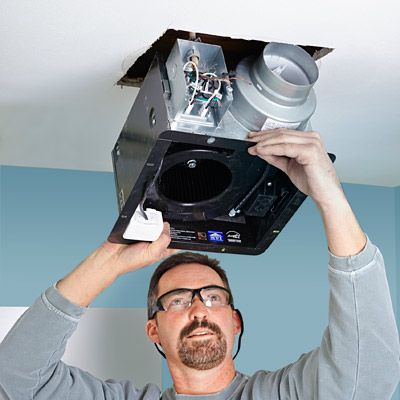
Installing the new fan requires careful positioning and attaching. Here’s how to insert the fan properly:
- Tilt the fan into the prepared opening, being careful not to damage the ceiling edges.
- Align one lip of the housing with the bottom edge of a ceiling joist.
- Secure this side with screws, making sure the fan is level and flush with the ceiling surface.
If there isn’t a conveniently placed joist, you may need a helper to hold the fan from below while you attach mounting brackets from above.
For situations where attic access is limited, you might need to enlarge the ceiling hole temporarily to reach in and attach the brackets from below.
Step 4: Fasten The Brackets
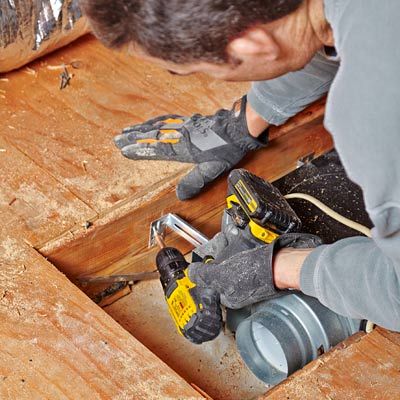
Securing the fan with brackets provides additional support and stability. Follow these steps to fasten the brackets:
- Access the attic space above the bathroom if possible.
- Extend the two support brackets that came with your fan kit to the facing joist.
- Make sure the brackets are level and properly aligned with the fan housing.
- Screw each bracket securely into place on the joists.
- Double-check that the fan housing remains level and flush with the ceiling below.
If the attic access isn’t accessible, you may need to use alternative mounting methods specified in your fan’s installation manual. Always follow the manufacturer’s instructions for the best results and to maintain any warranty coverage.
Step 5: Connect The Wires
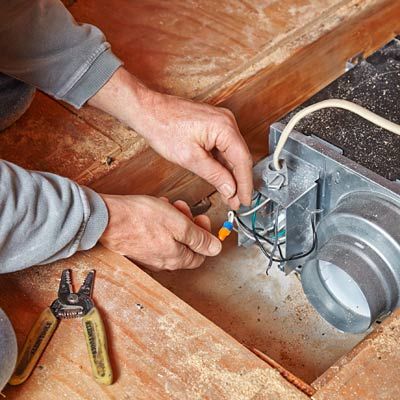
Proper electrical connections are crucial for the safety and effectiveness of your new bath fan. Here’s how to connect the wires:
- Thread the existing electrical cable from the bathroom through a cable connector and into the fan’s junction box.
- Remove the junction box cover to access the wiring terminals.
- Using wire nuts and electrical tape, connect the fan’s wires to the corresponding house wires according to the manual: black to black, white to white, and green to bare copper.
- Check that all connections are tight and well-insulated.
- Tuck the wires neatly into the junction box and replace the cover.
Always refer to the fan’s wiring diagram in the installation instructions, as some models may have additional wires for features such as lights or humidity sensors. Hire an electrician if you’re uncomfortable working with electrical wiring.
Step 6: Attach The Duct
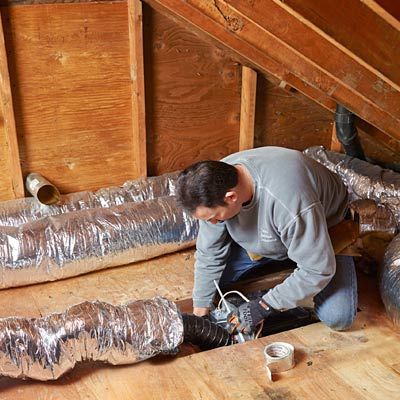
The ducts help vent moisture outside your home. Follow these steps to attach the duct:
- Measure and cut the duct to the appropriate length. In cold climates, use insulated ducting to prevent condensation inside the duct.
- Attach one end of the duct to the fan’s exhaust port using a zip tie.
- Secure the other end to the exterior vent, again using a zip tie.
- Seal all connections with foil tape to prevent air leaks.
- Make sure the duct has a slight downward slope towards the exterior to allow condensation to drain.
Remember, building codes require bath fans to vent moisture to the outside, ideally through a roof or gable wall. Avoid venting into your attic, as this can lead to moisture problems and potential mold growth. We recommend regularly inspecting the duct connections after installation.
Our Conclusion
Upgrading to a bigger bath fan is a worthwhile investment in your home’s comfort and health. By following these steps, you can significantly improve ventilation, reduce moisture-related issues and create a more pleasant environment. Remember to choose a fan with an appropriate cubic feet per minute (CFM) rating for your bathroom size, and consider features such as built-in timers for optimal performance. Don’t hesitate to call an electrician if you’re unsure about any part of the installation process.
